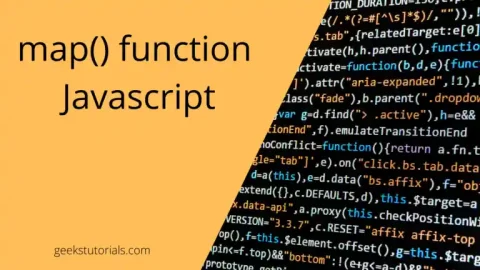In JavaScript, the 'this' keyword is a powerful and versatile tool that plays a crucial role in determining the context within which code is executed. Unlike other programming languages, where 'this' typically refers to the object the method is called on, in JavaScript, its value is dynamically determined at runtime based on how a function is invoked. When a function is called, 'this' can refer to different objects: it may point to the global object in the case of a standalone function invocation, the object that invokes the method in the case of a method invocation, or a newly created instance in the case of constructor functions. Understanding the nuances of 'this' is essential for managing scope, context, and object-oriented programming paradigms effectively in JavaScript applications.
Usage of the ‘this‘ Keyword in JavaScript:
The ‘this‘ keyword in JavaScript serves a vital role in accessing and manipulating data within functions, methods, and objects. Its behavior dynamically binds to different values depending on the context of function invocation, providing flexibility and versatility in programming. Let’s delve into its usage, advantages, and scope through clear examples.
1) Method Invocation: When a function is called as a method of an object, ‘this‘ refers to the object itself. For instance:
const person = {
name: 'John',
greet: function() {
console.log('Hello, my name is ' + this.name);
}
};
person.greet(); // Output: Hello, my name is John
In this example, the greet function is defined as a method within the person object. When invoked using person.greet(), ‘this’ refers to the person object, allowing us to access its properties like name.
2) Standalone Function Invocation: In standalone function invocation, ‘this‘ refers to the global object (window in browsers, global in Node.js). For instance:
function greet() {
console.log('Hello, my name is ' + this.name);
}
const name = 'John';
greet(); // Will output: Hello, my name is John
Here, the greet function is invoked as a standalone function. Since there is no explicit object context, ‘this’ refers to the global object, where name is defined.
3) Constructor Function Invocation: When a function is used as a constructor with the ‘new‘ keyword, ‘this‘ refers to the newly created instance. For instance:
function Person(name) {
this.name = name;
}
const person1 = new Person('John');
console.log(person1.name); // Output: John
In this example, Person is a constructor function. When invoked with new Person(‘John‘), a new instance of Person is created. Inside the constructor function, ‘this‘ refers to the newly created instance, allowing us to set its name property.
Advantages of using the ‘this‘ keyword
- Dynamic Binding: ‘
this‘ allows for dynamic binding, enabling functions to adapt their behavior based on the context in which they are called. - Code Reusability: By using ‘
this‘ within methods and constructors, you can create reusable code that can operate on different objects with similar properties and behaviors. - Encapsulation: ‘
this‘ promotes encapsulation by enabling functions to access and manipulate properties of their associated objects, leading to cleaner and more maintainable code.
Scope of the ‘this‘ keyword
- Global Context: In the global context, ‘
this‘ refers to the global object (window in browsers, global in Node.js). - Function Context: In standalone function invocation, ‘
this‘ also refers to the global object. - Method Context: When a function is invoked as a method of an object, ‘
this‘ refers to the object itself. - Constructor Context: In constructor function invocation, ‘
this‘ refers to the newly created instance.
About ‘this‘ keyword indicating the object or the main class
In JavaScript, the ‘this‘ keyword plays a crucial role in determining the context within which functions are executed. It dynamically refers to the object that invokes the function, but its behavior can be tricky to understand, especially in event handlers and methods. Let’s explore how ‘this‘ works in the context of class methods and event listeners with a simple example.
Example:
Suppose we have a class called ‘Menu‘ with methods to open and close an overlay:
class Menu {
constructor() {
this.openButton = document.querySelector('.open-button');
this.closeButton = document.querySelector('.close-button');
}
events() {
this.openButton.addEventListener('click', this.openOverlay);
this.closeButton.addEventListener('click', this.closeOverlay);
}
openOverlay() {
// 'this' refers to the object that triggered the event, not the Menu object
this.searchOverlay.classList.add('search-overlay--active');
}
closeOverlay() {
// Similarly, 'this' here would also refer to the object that triggered the event
this.searchOverlay.classList.remove('search-overlay--active');
}
}
In the ‘openOverlay‘ and ‘closeOverlay‘ methods, ‘this‘ is expected to refer to the ‘Menu‘ object. However, when these methods are called as event listeners, ‘this‘ actually refers to the element that triggered the event, not the ‘Menu‘ object.
Solution:
To ensure that ‘this‘ refers to the ‘Menu‘ object within these methods, we can use the ‘bind‘ method to explicitly set the context:
class Menu {
constructor() {
this.openButton = document.querySelector('.open-button');
this.closeButton = document.querySelector('.close-button');
this.events();
}
events() {
this.openButton.addEventListener('click', this.openOverlay.bind(this));
this.closeButton.addEventListener('click', this.closeOverlay.bind(this));
}
openOverlay() {
// Now 'this' correctly refers to the Menu object
this.searchOverlay.classList.add('search-overlay--active');
}
closeOverlay() {
// 'this' still refers to the Menu object
this.searchOverlay.classList.remove('search-overlay--active');
}
}
By binding ‘this‘ to the ‘Menu‘ object, we ensure that it retains its intended context regardless of how the method is called, enabling smooth and predictable behavior in our JavaScript applications.
In conclusion, the ‘this‘ keyword in JavaScript is a powerful mechanism for managing scope, context, and object-oriented programming. Its dynamic nature makes it a valuable tool for creating flexible and reusable code, enhancing the functionality and maintainability of JavaScript applications.
—- Thankyou for Reading —-






